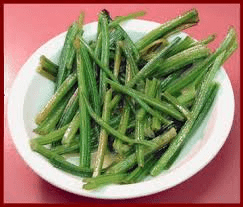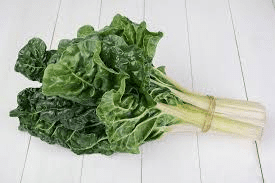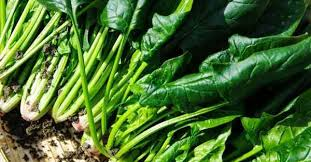The spinach stems are generally green and varies in thickness depending on the plant’s age and growing conditions. It can range from being relatively slender in young plants to more robust and sturdy in mature ones. The stem serves as the primary support structure for the entire plant, anchoring it in the soil and holding the leaves upright to maximize their exposure to sunlight, which is critical for photosynthesis.
Structurally, the stem is composed of several key tissues. The outermost layer is the epidermis, which protects the stem from physical damage and pathogens. Beneath the epidermis is the cortex, which contains parenchyma cells involved in storage and metabolic processes. The central part of the stem houses the vascular bundles, consisting of xylem and phloem tissues. The xylem transports water and minerals from the roots to the leaves, while the phloem distributes the sugars produced in the leaves to other parts of the plant.
Spinach stems are also edible and contain a similar nutritional profile to the leaves. They are rich in vitamins A, C, and K, as well as minerals such as iron and calcium. The stems also contribute to the dietary fiber content of spinach, which is beneficial for digestion and maintaining a healthy gut.
In culinary applications, spinach stems can be used in various ways. While they are often cooked along with the leaves, they can also be prepared separately. The stems can be chopped and added to soups, stews, and stir-fries, providing a slight crunch and additional nutrients. For those who prefer a more tender texture, the stems can be blanched or sautéed until they soften.
When preparing spinach, it is essential to consider the stems’ texture. In baby spinach, the stems are usually tender and can be eaten raw or cooked without any special preparation. In mature spinach, the stems can be tougher and may require more cooking time to become tender. Some recipes call for the removal of the thicker parts of the stems to achieve a more uniform texture in the dish.
From a horticultural perspective, the health of the spinach stem is a good indicator of the overall well-being of the plant. A robust and healthy stem suggests that the plant is receiving adequate nutrients and water. Conversely, a weak or discolored stem may indicate issues such as nutrient deficiencies, pest infestations, or disease.
While spinach leaves are often the star of the show, the stem is an indispensable part of the plant. It provides structural support, facilitates nutrient transport, and contributes to the plant’s overall nutritional value. Whether used in cooking or as an indicator of plant health, spinach stems play a crucial role in the life cycle of this nutritious and versatile vegetable.
The Economic Importance and Uses of Spinach Stems

1. Nutritional Value: Spinach stems are rich in vitamins and minerals, similar to the leaves. They can be consumed for their health benefits. Example: Adding spinach stems to stir-fries for extra nutrition.
2. Culinary Uses: Spinach stems can be used in various dishes, providing a crunchy texture and added nutrients. Example: Sautéed spinach stems with garlic.
3. Animal Feed: Spinach stems can be used as a nutritious feed for livestock. Example: Feeding spinach stems to goats and cattle.
4. Composting Material: Spinach stems can be composted to produce organic fertilizer. Example: Adding spinach stems to compost bins.
5. Natural Dye: Spinach stems can be used to produce natural green dye. Example: Using spinach stem dye for coloring fabrics.
6. Biodegradable Packaging: Fibers from spinach stems can be used to create biodegradable packaging materials. Example: Spinach stem fiber packaging for eco-friendly products.
7. Paper Production: Spinach stem fibers can be used in the production of eco-friendly paper. Example: Making recycled paper with spinach stem fibers.
8. Textile Industry: Spinach stem fibers can be used to create sustainable textiles. Example: Blending spinach stem fibers with cotton for eco-friendly fabrics.
9. Herbal Medicine: Spinach stems are used in traditional remedies for their medicinal properties. Example: Spinach stem tea for digestive health.
10. Biofuel: Spinach stems can be processed to produce biofuel. Example: Converting spinach stem biomass into ethanol.
11. Food Industry: Spinach stems can be used as a thickening agent in soups and sauces. Example: Pureeing spinach stems to thicken vegetable soups.
12. Cosmetic Industry: Spinach stem extract is used in skincare products for its antioxidant properties. Example: Spinach stem serum in anti-aging creams.
13. Dietary Fiber: Spinach stems are high in dietary fiber, which can be added to food products. Example: Adding spinach stem fiber to cereals and baked goods.
14. Pharmaceutical Industry: Spinach stem extracts are used in pharmaceutical formulations. Example: Spinach stem extract in capsules for blood pressure management.
15. Agricultural Mulch: Dried spinach stems can be used as mulch to retain soil moisture. Example: Using spinach stem mulch in organic farming.
16. Animal Bedding: Spinach stems can be used as bedding material for livestock. Example: Spinach stem bedding in poultry farms.
17. Craft Materials: Spinach stems can be used in crafting and DIY projects. Example: Making natural wreaths and decorations with dried spinach stems.
18. Environmental Protection: Spinach stems can be used in bioremediation to clean up contaminated soils. Example: Using spinach stems in phytoremediation projects.
Read Also: Prevention and Methods of Controlling Coccidiosis Among Chickens
The Products and By-products That Can Be Derived From Spinach Stems

1. Fresh Stems: Harvested and sold fresh for consumption. Process: Harvesting and packaging.
2. Dried Stems: Spinach stems are dried for longer storage. Process: Drying and packaging.
3. Spinach Stem Powder: Dried and ground spinach stems. Process: Drying and grinding.
4. Spinach Stem Extract: Liquid extract used in supplements. Process: Extraction and concentration.
5. Spinach Stem Juice: Fresh juice extracted from stems. Process: Juicing.
6. Spinach Stem Chips: Baked or fried stems. Process: Baking or frying.
7. Spinach Stem Fiber: Fibers extracted for use in textiles and paper. Process: Fiber extraction and processing.
8. Compost: Spinach stem waste turned into compost. Process: Composting.
9. Biofuel: Biofuel produced from stems. Process: Biomass conversion.
10. Spinach Stem Dye: Natural dye extracted from stems. Process: Extraction and application.
11. Animal Feed: Stems used as livestock feed. Process: Harvesting and drying.
12. Herbal Remedies: Traditional remedies made from stems. Process: Drying and formulating.
13. Agricultural Mulch: Dried stems used as mulch. Process: Drying and application.
14. Food Thickener: Stems pureed and used as a thickener. Process: Pureeing and adding to foods.
15. Biodegradable Packaging: Packaging materials made from stem fibers. Process: Fiber extraction and molding.
16. Craft Supplies: Stems used in crafting projects. Process: Drying and preparing for crafts.
17. Pharmaceutical Ingredients: Extracts used in medicines. Process: Extraction and formulation.
Read Also: Time and Methods of Fertilizer Application on Crops
Frequently Asked Questions (FAQ’s) About Spinach Stems

1. What are spinach stems?
Spinach stems are the stalks that connect the spinach leaves to the plant. They are edible and contain nutrients similar to the leaves.
2. Can spinach stems be eaten?
Yes, spinach stems can be eaten and are often used in cooking, similar to the leaves.
3. Are spinach stems nutritious?
Yes, spinach stems are rich in vitamins, minerals, and dietary fiber, making them a nutritious addition to the diet.
4. How do you prepare spinach stems for cooking?
Spinach stems can be chopped and added to soups, stews, stir-fries, or sautéed as a side dish.
5. Can spinach stems be used in smoothies?
Yes, spinach stems can be blended into smoothies along with the leaves for added nutrition.
6. How should spinach stems be stored?
Fresh spinach stems should be stored in the refrigerator and used within a few days. They can also be dried for longer storage.
7. Are there any health benefits to eating spinach stems?
Yes, consuming spinach stems can provide health benefits such as improved digestion, better bone health, and increased antioxidant intake.
8. Can spinach stems be used in herbal remedies?
Yes, spinach stems are used in traditional medicine for their various health benefits, including digestive support.
9. How do spinach stems contribute to sustainability?
Spinach stems can be used in various sustainable practices such as composting, biodegradable packaging, and biofuel production.
10. What are some creative uses for spinach stems?
Spinach stems can be used in crafting, as natural dyes, in sustainable textiles, and even in bioremediation projects.
Read Also: Measurement and Definition of the term water yield

